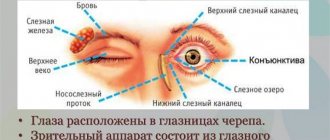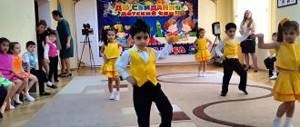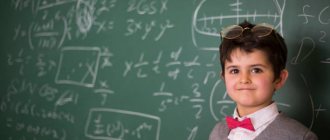Training glasses
However, despite such diversity, all of these are analogues intended for vision correction, which operate on the same principle. This principle consists of vignetting light, or, more simply, limiting the light flux using holes in a sheet of opaque glass.
With constant wearing of ordinary glasses, the muscles of the eyes, which are responsible for focusing, begin to gradually weaken, since they are not used to their full capacity.
Because of this, vision begins to gradually decline more and more and there is a need to replace lenses with increasingly powerful ones. But there is an opportunity to slow down this process.
You need to start using training glasses.
Training glasses are designed for visual gymnastics. They are made of a frame in which instead of lenses there are opaque plastic plates with holes. The arrangement of the holes in the lenses has a pseudo-chessboard pattern, and the horizontal distance between them is 3 mm, diagonally - 3.5 mm.
Eye training glasses are produced in the form of regular glasses in a classic frame with black plastic instead of glass. The entire surface is pierced with holes in a certain order. Those who put on glasses for the first time surprisingly note that they get by just fine without glasses with diopters.
The holes in the lenses are not simple: conical and cylindrical. The number of holes depends on the model, in some the lens is completely covered with holes, in others in a certain order. This does not change the quality.
After putting on training glasses, the perception of light and its sharpness changes. Perforation promotes proper distribution of the load, forcing the eye to work fully.
It is recommended to wear up to 2 hours a day. You can divide it into 3-4 times, for example, 30 minutes in the morning, and 1 hour in the afternoon and evening. It is difficult to focus on complex visual work with glasses; it is better to do what you do well and confidently without glasses: cook, watch TV, work in the garden.
Contraindications include complex eye diseases, headaches, and intracranial pressure. In any case, if glasses are uncomfortable, they should not be worn.
For astigmatism
With astigmatism, when a child cannot see either far or near, and all objects are blurry and their perception is distorted, it is important to start classes to restore vision on time.
As a rule, the first symptoms that make it clear to a teacher or parent that the baby has astigmatism will be:
- child's complaints about tired eyes;
- complaints of headaches arising from increased tension in the eyes;
- looking at objects either too close to the face, or vice versa - very far away.
A complete cure for astigmatism can only be achieved through surgery once the child reaches an older age, but corrective exercises can significantly slow down the process of vision loss.
Before you start doing eye exercises with your child, it is better to first try the complex on yourself, so that you can then teach your child how to do such eye exercises as simply and easily as possible.
A set of exercises for astigmatism comes down to the following algorithm:
- Closing your eyes for 10 seconds will help relax the eye muscles and will generally contribute to the correct execution of the entire complex.
- Observation of color circles made of cardboard and located in the right and left corners of the room (the circles must be different in both color and size).
- With his chin resting on his fists, the child should redirect his gaze up/down and right/left 4 times in each direction, and pause for a few seconds between changes in direction.
- After taking a deep breath, you need to look between your eyebrows for a couple of seconds, then you should take a breath, lower your head down, and close your eyes.
- It is necessary to slowly move your gaze clockwise or counterclockwise on the dial. After completing the circle, you can close your eyes for a few seconds.
If your child has astigmatism, you should limit his computer use and TV viewing time to 30 minutes a day. Preference should be given to walks in the fresh air.
How do Europeans improve their productivity by protecting their eyesight?
Modern gadgets can not only worsen your vision, but can also help your eyes rest. There are a number of different ophthalmic applications for smartphones that are designed to relax and rest the eyes.
There are also a number of graphic programs for vision and computers. The patient is seated in front of the monitor and special programs are turned on.
One of the most common eye trainers on the computer are illusions, repeating patterns and endless mazes. The patient should watch the center of the screen and not be distracted. The activity often greatly relaxes the patient; small children can fall asleep near the monitor.
In the era of the advent of computer technology and various gadgets, every person spends more and more time in front of the monitor, without even realizing how serious damage is caused to his vision. How to protect your eyes from such negative influences? If you work at a computer every day, then eye exercises are simply a necessity in your daily life.
Today, computer technology has become so integral to our lives that it is difficult to imagine a family that would not have a computer, laptop or other gadget. Most professions involve working behind a monitor; even students and schoolchildren start their day by watching news on social networks.
Recommended therapeutic exercises
Special gymnastics can significantly increase the effectiveness of using training glasses.
Note that these exercises were developed specifically for therapeutic glasses.
Their execution looks like this:
- To begin with, bury your eyes for about 10 seconds and relax. At this moment, all muscle tissue also relaxes.
- You need to hang any image on the window, the size of which should be 1x1 centimeter. After this, you should stand at a distance of about 30 centimeters. To engage all the muscles, you first need to look into the distance for 3 seconds, then at the picture for 6 seconds. This exercise should be repeated up to 8 times.
- The next step is quite simple to perform - first close your eyes and then open your eyes about 10 times.
- Rotation of the eyes on all sides is performed about 8 times.
- Having placed your finger at arm's length, you should move it closer and further away about 6 times. You need to bring your finger closer to a distance of 7 centimeters.
- Without turning your head, you need to move your palm in front of your eyes from left to right. This action should be repeated about 8 times.
- The next step is to repeat stage 2, only it should be performed for 7 minutes.
After this, the training glasses are removed, after which the eyelids are massaged with the fingers.
Bazarny eye trainer
Russian scientist V.F. Bazarnov studied the eye health of schoolchildren for many years and developed a unique simulator. You can make it yourself, and if you use it for a long time, you can do without it.
Ophthalmologists note the good effect of the simulator. It was also highly rated by neuropsychologists. Working with the simulator every day improves grades in school, children begin to concentrate better on tasks and understand better in logical problems.
The Bazarny eye simulator itself is a drawing on the wall or ceiling of 3 multi-colored lines. In the center is a large horizontal figure eight or an infinity sign, for example green. The second line is oval, slightly larger than a figure eight, green. The third line completely repeats the second, slightly larger in diameter and red in color.
Often these three figures are applied to a standard sheet of Whatman paper. It is attached to the wall or ceiling so that the patient can examine all the lines while standing. They find a point from which they begin to repeat the figure eight with their eyes, then both ovals. It is difficult for small children to concentrate and not lose the line; you can help yourself with your finger, pen or pointer.
There are no contraindications, unless you feel generally unwell. Usually everyone enjoys doing the exercises. It is recommended to do 1 approach every day 20 times along each line, or before complex work where concentration is required.
Methodology for performing visual-vestibular training using “SUS”
- Performed only while standing
- It is advisable to have free space in the center of the classroom. (Photo 2)
- Children stand in this space and, at the command of the teacher or one of the students, one - two - three - four, etc., with a frequency of approximately 1 second per cycle, bend their torso left - right (10-12 times)
- Then forward - backward (10-12 times)
- After this, follow and coordinated movements along the green contour are made with the eyes, head and whole body 10-12 times. One revolution is completed in approximately one second.
- Then along the red outline the same number of times
- Then in eight
- The effectiveness of the training increases if movements along the ISU lines are synthesized by the eyes and hands (Photo 1)
Photo 2: school No. 7, Yalta
Gymnastics for the eyes of Lazareva
Lyudmila Lazareva wore glasses since childhood and suffered from a range of eye diseases. As an adult, I began to look for methods to alleviate the condition. Over time, her vision was restored, and Lyudmila shares her exercises with everyone.
Gymnastics for the eyes of Lazareva begins with a massage, improvised means are used, then gymnastics for the eyes, which can be seen in the video below. Lyudmila runs her own video channel, conducts regular webinars and sells courses. Throughout the course, she carries out all the exercises together with the patient and brings them to good results.
A set of exercises according to Norbekov
Complex gymnastics according to Norbekov will help cope with daily eye fatigue. It is indicated for cataracts and myopia, and its constant implementation will have a positive effect on the child’s entire body.
Eye gymnastics for children according to Norbekov
All exercises must be performed with a straight back, and after each exercise, blinking is performed for several seconds. There are two sets of exercises - full and shortened.
The abbreviated complex is represented by the following tasks:
- With eyes closed, rotate the eyeballs clockwise and counterclockwise 10 times.
- Closing your eyes, move your gaze across the area of the rectangle, stopping for a couple of seconds in each of the corners (10 times), and then along its diagonals.
- With eyes closed, draw an infinity sign in front of you, starting from different points (repeat 10 times).
- Hold your gaze on a brightly lit object, then cover your eyes with your palms - perform such cycles 10 times.
- Focus your gaze on the tip of your nose, then move your gaze to any object in the distance.
- The set of exercises should be completed by blinking for a minute.
Eye trainer Treat-Play
The Treat-Play eye trainer is suitable for all family members, and it’s even better when everyone from children to grandmothers trains on the same trainer. Developed by pediatric ophthalmologists and engineers at a scientific institute. Easy to maintain, shows good results with regular training. Recommended for many eye disorders: myopia, strabismus, astigmatism.
The simulator is a tube similar to the popular kaleidoscope toy. The entire training takes place in 2-3 minutes for each eye, and can be done several times a day. The main thing is to make all your workouts regular and you will definitely get results.
Procedure for using the simulator:
- First you need to do eye exercises;
- turn on the simulator
- We hold the tube in our right hand, the eyepiece in our left. We move the distant tube and look at a distant object, for example a picture on the wall or a flower on the window. Then we move to the nearest object, any toy on the table, while rotating the eyepiece around its axis.
- repeat 3-5 times.
The Treat-Play eye trainer is contraindicated for mental illness and epilepsy.
Exercise that improves vision, according to V. Zhdanov
In the 80s, V. Zhdanov developed his own technology for working with vision correction. He created special gymnastics to reduce eye strain. It includes some of the elements introduced by Bates, but does not include exercises that would raise doubts among qualified practitioners.
Unlike Bates' recommendations, Zhdanov's technique does not cause any complaints from ophthalmologists and is often recommended by them as an additional means of improving vision. Studies have shown that when performed correctly and regularly, the complex helps reduce muscle tension and moisturize dry eyes.
It is possible to overcome the symptoms of false myopia. Exercises bring great benefits in combination with drug treatment. Zhdanov’s technique is based on several basic exercises:
Blinking. All you need to do is blink both eyes quickly. The exercise is performed for 30 seconds;
Arrows. Shift your gaze from right to left without stopping. You need to repeat for a minute without a break. At the end of 10 seconds, blink without straining your eyes;
Diagonal. Move your gaze diagonally, first to the right, then to the left and vice versa. Duration of execution – 1 minute. Then blink for 10 seconds;
Vertical. It is performed in the same way as the previous one, only the gaze is transferred from top to bottom and vice versa. After repeating 7 times, you again need to blink for 10 seconds;
Rectangle. In the air, with your gaze, draw an imaginary geometric figure of the appropriate shape. Must be repeated three times;
Zigzag. Using your gaze, draw a figure similar to a zigzag: first from top to bottom, then in the opposite direction. After 5 repetitions, rest after blinking for 10 seconds;
Numbers. The gaze should move like a clock hand, describing a full circle. At the same time, imagining a dial, stop your gaze at the places where the numbers 3, 6, 9 and 12 are located.
The complex is completed with traditional blinking.
Eye trainers for amblyopia
Treatment must begin in childhood, while the eye is growing. For amblyopia (lazy eyes), the main treatment is aimed at training the eye muscles. Additionally, ophthalmologists prescribe correction with special lenses.
Amblyopia is diagnosed using a special refractometer device, the doctor determines the degree of distortion of the lines and prescribes physiotherapy and glasses. The problem with amblyopia is that each eye sees the picture differently, one of the common options is that the right eye does not see parallel stripes, the left does not see vertical ones.
Choosing visual aids
There are no special recommendations for choosing training glasses. As a rule, it is recommended to preliminary try them on when choosing, and, based on the sensations received, choose a certain model.
There are several points to consider when choosing:
- The lenses must be large, since otherwise the training glasses will not reduce lateral vision, which means their effectiveness is reduced.
- The design should be comfortable.
- Among all the models, only one has passed clinical trials - Laser Vizhi. The studies were carried out in Russia and Ukraine. The results indicate that these training glasses have a beneficial effect on vision, but only with regular use. That is why you should create a specific schedule for their use.
- In most cases, the choice involves determining what material the frame should be made from. Plastic licenses are cheaper and more practical, but metal ones are more attractive.
- Some manufacturers of the products in question classify them as follows: for men, women or children. Note that this classification only affects the design of glasses. At the same time, children's versions have even less weight and size, which can also be called a distinctive quality.
As can be seen from the above information, the choice of training glasses is quite simple. Almost all models have the same properties, they just differ in design and price.
Eye massagers
The trainer is a powerful pair of glasses that attach well to the head and massage the large area around the eyes. The eye contact area is equipped with additional massage tentacles. There are magnets between them; the device additionally provides stimulation with magnetotherapy.
The massagers are connected to the network and have a control panel. Often the devices have a timer; the procedure should last no more than 15 minutes. After switching on, a slight vibration begins. Before the session, it is better to take a comfortable position; you cannot walk with the device, and it is best to relax, reclining.
Choosing a device for children
It is also quite common for children to develop vision problems. If they develop from an early age, then in adulthood the problems will be even more significant. That is why, if a predisposition to vision problems was identified in childhood, then you should definitely use training glasses.
Features of the choice include:
- There are special models that are designed for children. During their production, special attention is paid to the quality of the materials used. In many cases, it is plastic, which is produced using a special technology, that is used in the production of children's training glasses.
- When choosing a model of training glasses, you should try them on. The child should be comfortable wearing them.
- It is important enough for children that they are interesting and beautiful. In order for the child to constantly use the simulator to solve vision problems.
Recently, some ophthalmologists have been offering models that are made according to a prescription. Note that they will cost much less, and the efficiency will be exactly the same as in other versions. Therefore, you can make a selection at a pharmacy or specialty store from the presented assortment.
If you do not pay attention to the occurrence of discomfort in the eyes or asthenopia, then there is a possibility of the appearance of a veil and tearing. As a result of such a reaction of the body, a spasm of the visual muscles may begin.
In this case, a spasm of accommodation leads to the development of various diseases, for example, myopia. This is why you should take your health seriously; you should use special training glasses to relieve stress on certain visual muscles.
The benefits and harms of eye simulators
There is debate among patients and ophthalmologists about the benefits and harms of eye simulators. Doctors quite widely use simulators in pediatric vision restoration therapy. There are physiotherapy rooms in every eye clinic, and these methods are always used in a course of complex treatment.
Typically, the course includes vitamins and medications that improve blood flow to the head and vascular function. Therapeutic gymnastics and a large course of training on simulators. This gives good results in restoring vision in children. Between courses, many are prescribed occlusion - closing one eye at a time.
With regular treatment, which is usually every six months, therapy gives good results. But over time, as the eyes grow, vision recovery slows down. Adult ophthalmologists prescribe a completely different treatment, often surgical intervention.
To maintain results, it is recommended to use exercise machines and eye exercises. Which one is better to choose? Be sure to consult an ophthalmologist. The talk that exercise machines do not help is precisely because the device is chosen incorrectly or is not used correctly.
The essence and principles of the methodology
Around the unusual system of M.S. Norbekov, there are constant disputes. Opponents cannot decide whether this gymnastics is useful or harmful. The author himself considers his method original and unconventional, because the patient’s healing occurs not only on the physical level. The healer claims that as soon as a person gains peace of mind, believes in himself and his strengths, improved vision will happen on its own and will be a pleasant bonus in global life changes.
The technique skillfully combines general physical exercises, work with the eye muscles, oriental massage practice and self-hypnosis. Gymnastics for the eyes according to Norbekov are easy and quick to learn and do not cause difficulties when performing. Thanks to massage movements, the eye muscles calm and relax, concentration increases and well-being improves.
When performing the exercises, the author recommends strictly adhering to certain rules.
- During exercise, use only the eye muscles. Keep your head straight without changing its position.
- Don't squint or strain your eyes. At the first sign of fatigue, blink and relax.
- During the massage, use your fingertips. Do not rub active points. Make sure that the massage movements are soft and do not cause discomfort.
- Be sure to follow the sequence of exercises. Their load is designed to gradually increase.
- Don't start studying in a bad mood. To improve your vision, you need a positive emotional attitude.
It should be noted that the author really weighs the possibilities of the developed gymnastics. Therefore, he does not consider it a panacea for all eye diseases. However, he notes that if you exercise regularly, you can easily get rid of nearsightedness, farsightedness or astigmatism.
Causes of visual impairment in children and adolescents
Vision decreases for the following reasons in adults and adolescents with:
- Constant fatigue of the visual apparatus;
- Immune system failures;
- Poor nutrition and modern bad habits;
- Disturbed day and night mode;
- Acquired eye pathologies;
- Excessive workloads;
- Disorders of the nervous and endocrine systems.
Children's eye problems are felt from the first days of birth. Most often, a child needs special exercises due to:
- Birth trauma;
- Prematurity;
- Congenital defect;
- Heredity.
It is possible for children to have worsened vision because of:
- Head and spinal column injuries;
- Osteochondrosis;
- Regular stress;
- Hypertension;
- Long-term viewing of cartoons, games on smartphones and PCs.
It is the last point that is the main lever for the deterioration of the eye condition even before school. And the main features are:
- Frequent headache;
- Instant fatigue;
- Discomfort even with light loads.
For your information! Most often, children with poor vision simply squint. And it’s time to choose the right exercise or treatment.






